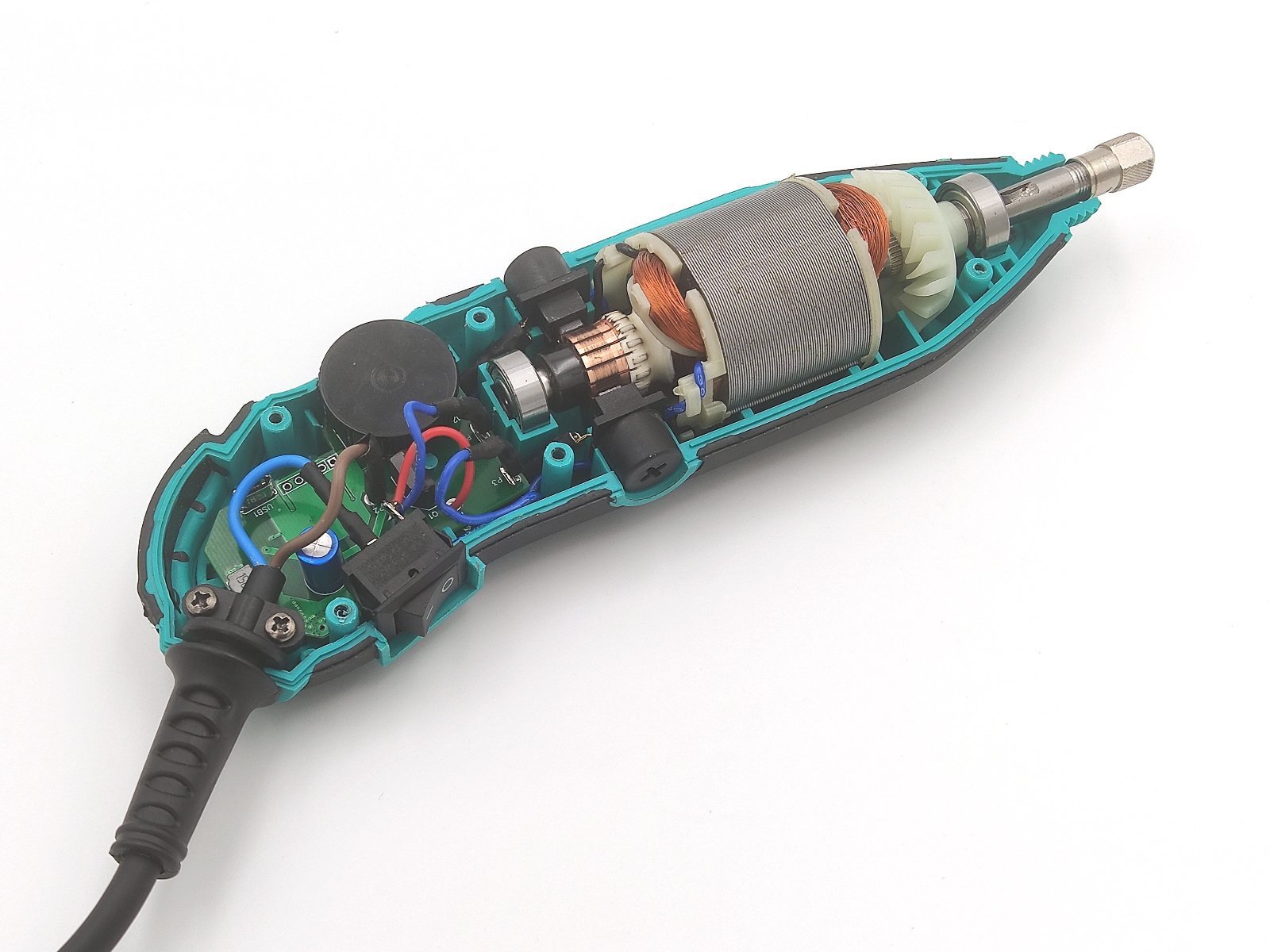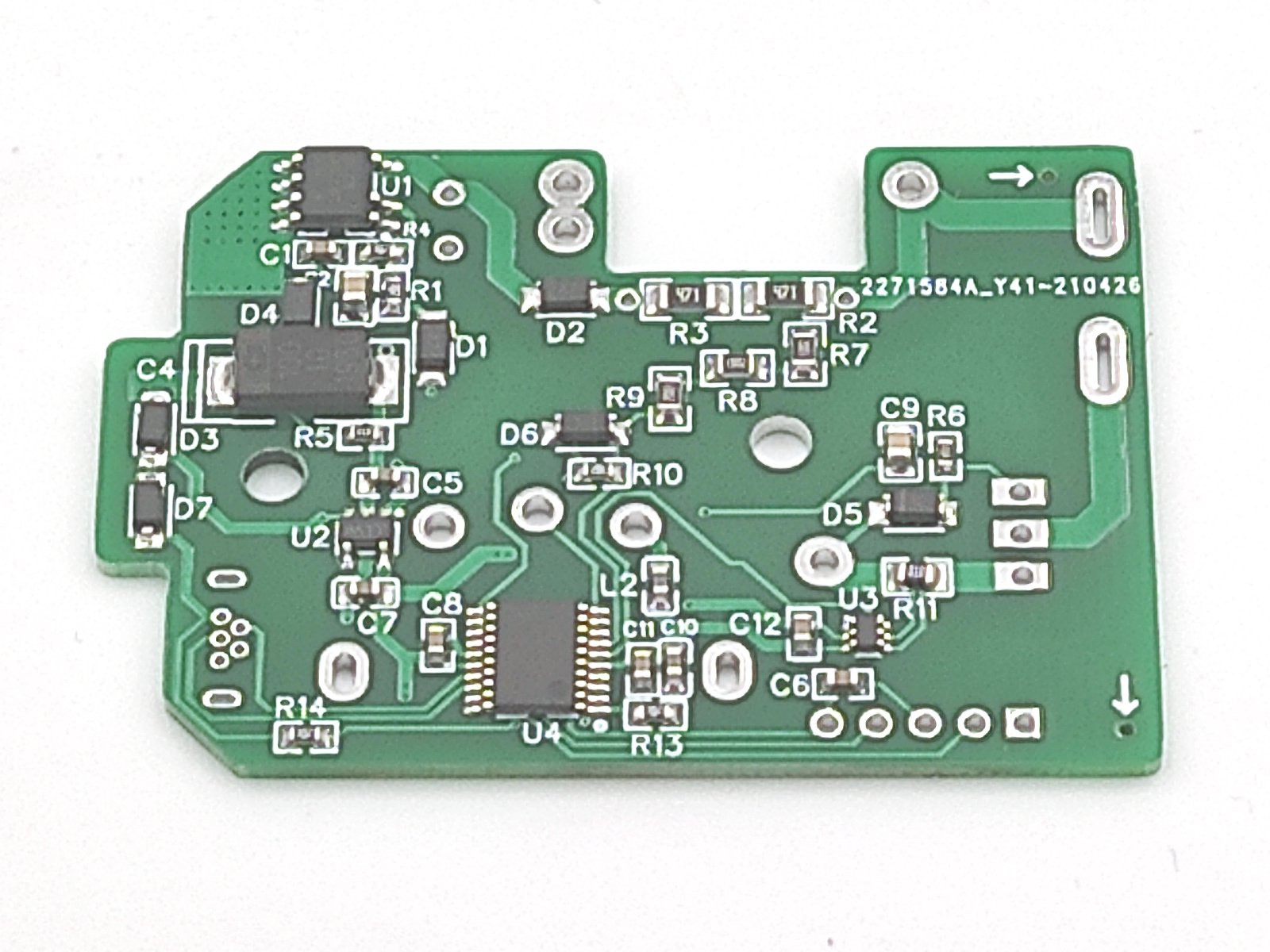-
New firmware (v3) and boards (v4)
08/15/2021 at 23:25 • 0 commentsNotable update. Since old grinders (Hilda 180) are discontinued, PCBs were reworked for new models:
![]()
![]()
![]()
![]()
Also, there are notable changes in software, and minor schematic tweaks. The most notable things:
- New boards support.
- Replaced PID with ADRC.
- Improved calibration.
- Single side SMD mounting.
-
New boards & fails :)
04/25/2021 at 14:26 • 0 commentsI tried to simplify schematic, and replace AC-DC convertor to inductor-less, based on KP3310SGA:
Also, tweaked schematic a bit to route all components on single side, and added board for one more grinder model.
Unfortunately, when received PCB and started to test KP3310SGA, found one serious disadvantage. Turn on time takes 5-10 seconds after power on :). This may be acceptable for some appliances, but not usable with grinder.
So, i had to abandon v3 hardware in favor of v4:
AC-DC uses LNK3204, but other advantages of v3 still exists:
- More PCB variants, for actual grinder models
- Single side SMD components mounting
Those are not tested yet. Just ordered.
-
Firmware 2.0.0
10/05/2020 at 12:02 • 0 commentshttps://github.com/speedcontrols/ac_sc_grinder
One more rework:
- Ported to STM32F0 family (with limited hardware multiplication and no division).
- Significantly reduced RAM demands.
- Added HALs for new boards.
- Open triac with short pulses.
- Fixed max possible speed.
- Other minor changes.
Now firmware can fit into any MCU with 4K RAM & 32K flash. Our choice is STM32F042F6P6 - because it can be flashed by USB without ST-Llink.
Also, final schematic was simplified again, and routed for actual grinder models. Here is temporary link: https://easyeda.com/speed/ac-speed-control-v2. It was not tested yet, but i already ordered PCB and components, to check how i is. As soon as i works, i will update project docs.
What is changed (except MCU), if compare with dev board?
- Control triac via capacitor, instead of make negative MCU power. More accessible and cheap components.
- Changed step-down chip to LNK3204, because LCSC discontinued MP157.
So, optocouple with snubber network was removed in more elegant way. The only limitation - have to use 10ma triacs. But that's ok for expected kinds of use.
-
New PCBs
06/28/2020 at 05:22 • 0 commentsWithout firmware yet, just nice pictures :)
![]()
![]()
Changes were described in previous record about v2 schematics. I will post more details when everything works.
-
Firmware 1.1.0 released
04/29/2020 at 20:25 • 0 commentsWhile not a big deal for users, this is a full code refactoring to simplify maintainability and upcoming changes. Now can recommend project as nice example of modern embedded software development :).
From user's point of view - disabled integral part of PID by default. Everything else makes sense for developpers only.
If you wish dive into details, see changelog: https://github.com/speedcontrols/ac_sc_grinder/blob/master/CHANGELOG.md.
-
Upcoming V2 schematic
03/27/2020 at 11:37 • 0 commentsI decided to experiment with hardware. Some ideas are "just for fun", other should improve development convenience.
From user's POV:
- It would be convenient to upload firmware by USB, without STlink.
- It would be nice to reduce components and allow more compact PCB-s for other devices.
From developper's POV:
- Need optional tachometer, for use grinder as lab stand.
- Need some way to transfer measurements to PC.
Here is temporary link to new schematic (draft), which should replace current one when complete: https://easyeda.com/speed/ac-speed-control-v2.
What was changed:
- Direct triac drive - no more optocoupler and snubber chain.
- Use STM32F07x, with USB upload support. USB parts are still optional, if extra space savings required.
- Use MP157 instead of LNK304 - more compart and cold.
- Optional hall sensor (for lab stand). Will need magnetic label on shaft.
- Optional nrf24l01 "nano" board for realtime wireless log transfer to PC. Will use RF-nano Arduino on another end, to observe data in terminal.
- Other minor polish.
Hope to do last checks on weekend and place PCB order then.
Grinder speed control with stable RPM
Uses BackEMF to track speed of AC brushed motor
 Vitaly
Vitaly




